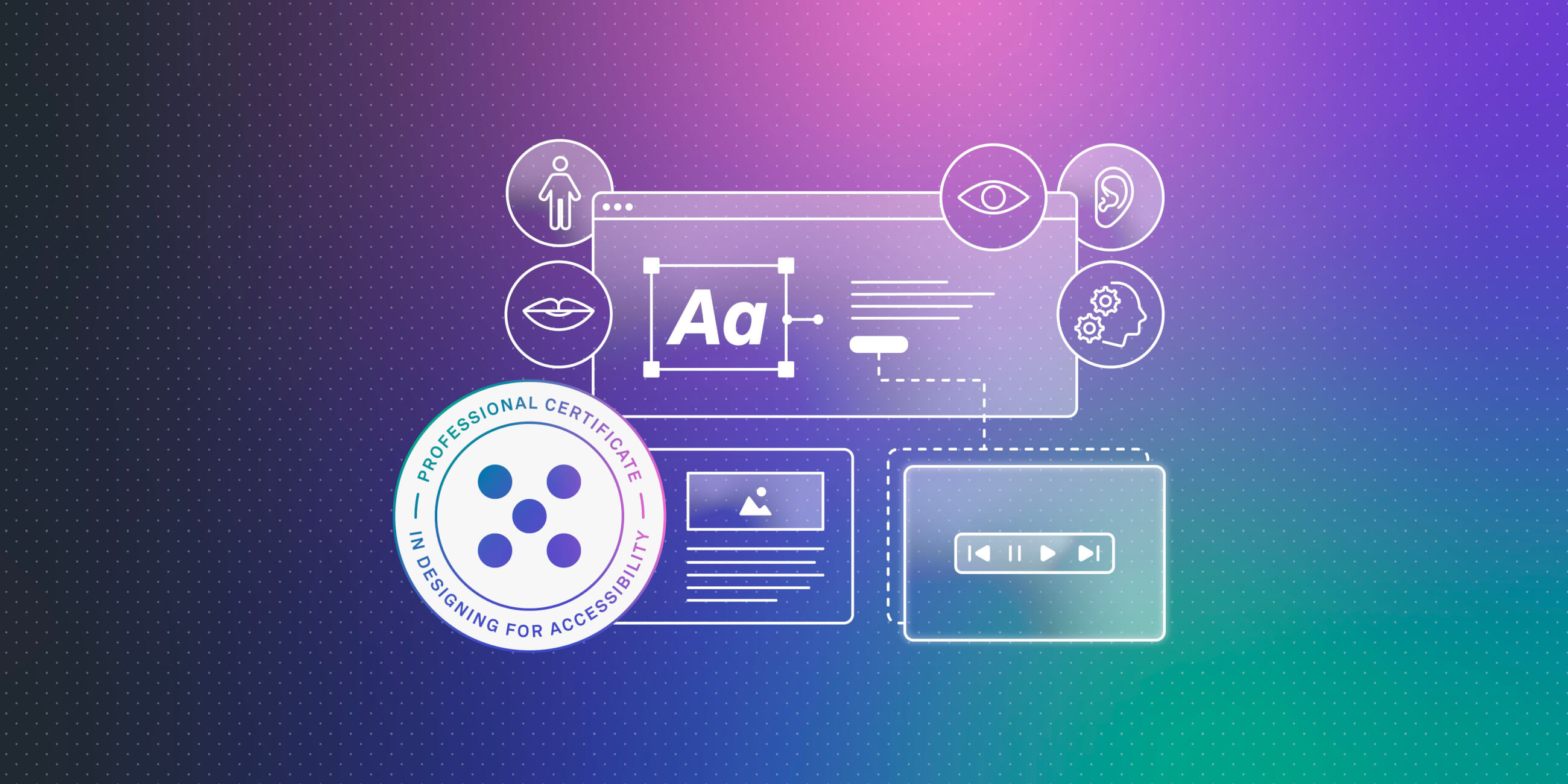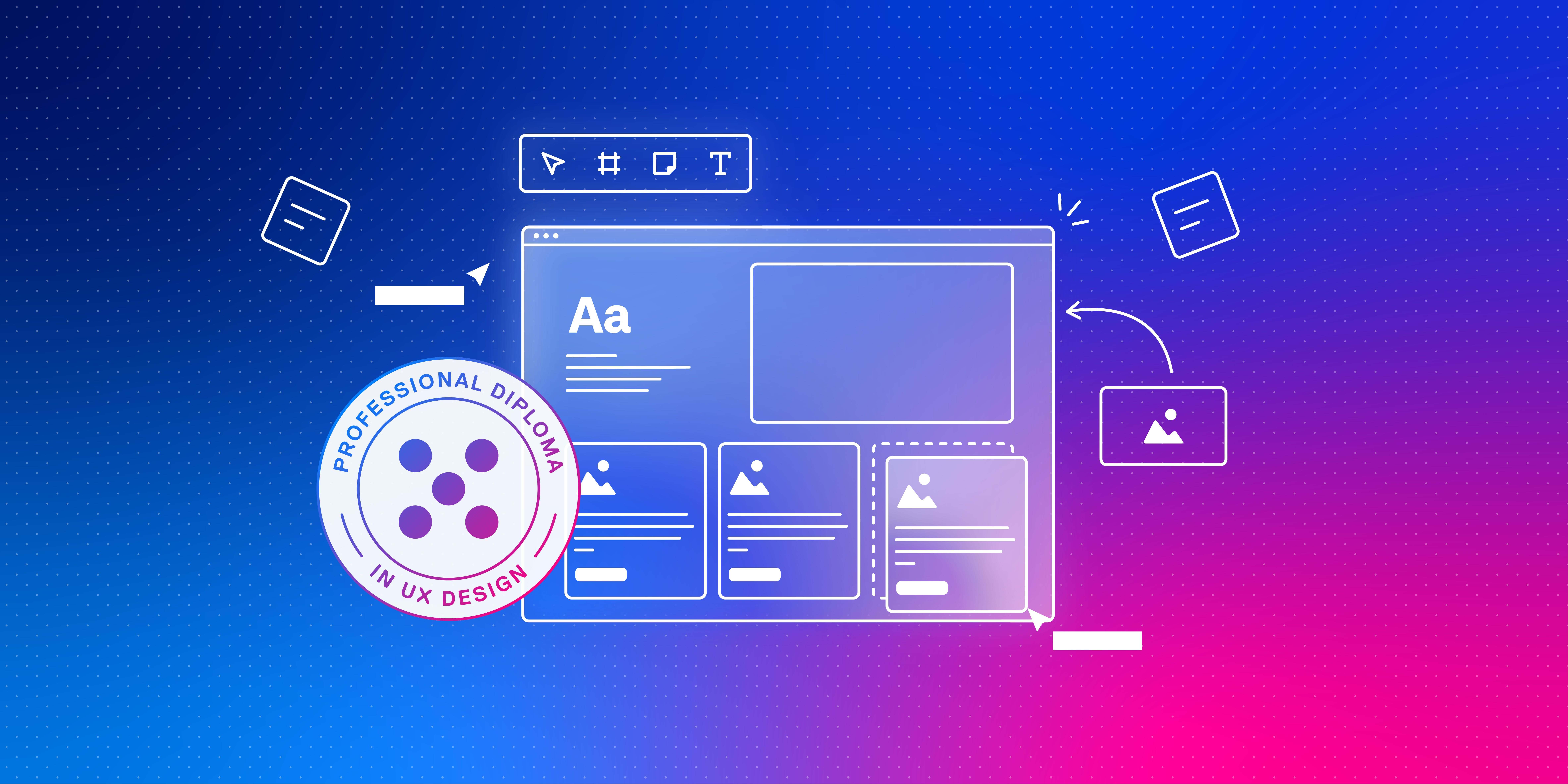A new era of digital accessibility is upon us. With the European Accessibility Act (EAA) enforcement deadline fast approaching on June 28, 2025, organisations across Europe – and any company doing business in the EU – must ensure their digital products are accessible to people with disabilities.
In response to this pivotal shift, we’re launching the Professional Certificate in Designing for Accessibility in April, an essential course for product and design teams working in companies with exposure to the EU.
Why accessibility matters more than ever
Accessibility isn’t just about compliance, it’s about creating better experiences for everyone. Designing with accessibility in mind means removing barriers, improving usability and ensuring that digital products work for people of all abilities. It enhances the user experience for a broader audience, drives innovation and fosters inclusivity.
Common accessibility issues
Accessibility issues often hide in plain sight. Here are three common problems you might encounter on your website or app, ranging from simple fixes to more complex ones:
1. Poor colour contrast
Text that looks fine to you might be unreadable for someone with vision impairments. Light grey text on a white background, for example, can fail accessibility guidelines, making your content inaccessible for millions of users.
Fix level: Easy – often just a tweak to your design system.
2. Inaccessible forms
Forms are everywhere on the internet. We use them to create passwords, tell people our home address and make payments. But if a form field doesn’t have a visible label or proper instructions for screen readers, someone using assistive tech may not know what they’re meant to input. This could mean they can’t complete tasks like signing up or checking out.
Fix level: Moderate – needs both design and development work.
3. Keyboard traps
Many users navigate with a keyboard rather than a mouse. If your website or app includes elements that can’t be accessed or dismissed with a keyboard (like pop-ups or modals), you’re creating a frustrating – and sometimes impassable – barrier for many users.
Fix level: More complex – usually requires developer intervention and thorough testing.
Understanding the regulations
The European Accessibility Act (EAA) is a landmark piece of legislation. It applies not only to companies based in the European Economic Area but also to any organisation that sells products or services within the EU. The act covers a wide range of digital services, including websites, mobile applications, e-commerce platforms and software tools.
Beyond the EAA, the course will also cover the Web Content Accessibility Guidelines (WCAG). This is the globally recognised standard for digital accessibility, providing best practices for ensuring web and app content is perceivable, operable, understandable and robust.
By understanding these regulations, professionals will gain confidence in designing products that comply with legal requirements.
What makes this course unique?
Here are some reasons why we think you should consider taking the course:
- Goes beyond the basics: The course covers fundamental principles while diving deeper into practical implementation.
- Expert-led: It has been developed in collaboration with accessibility specialists to ensure real-world relevance.
- Hands-on exercises: It includes practical tasks that help designers immediately apply accessibility principles.
- Real-world examples: Learn from best practices used by leading organisations.
- Understanding legal requirements: Learn how to design in line with key accessibility standards and regulations.
Who is this course for?
This course is ideal for:
- UX, UI and product designers looking to integrate accessibility into their workflows.
- Product managers and product owners who need a strong foundation in accessibility principles.
- Design and product teams aiming to create compliant and inclusive experiences.
What will you learn?
The course is structured into five comprehensive modules:
- Introduction to accessibility – Understanding disabilities, digital barriers and the accessibility mindset.
- Accessibility guidelines and laws – Breaking down WCAG and EAA standards into actionable design strategies.
- Research and testing for accessibility – Conducting accessibility audits and user research with people with disabilities.
- Designing for accessibility – Practical strategies from colour contrast and keyboard navigation to integrating accessibility into design systems.
- Advocating for accessibility – Building a case for accessibility and securing stakeholder buy-in within organisations.
Preparing for the European Accessibility Act deadline
Many businesses remain unaware of the impending EAA deadline and its implications. The new regulations will require digital products – websites, apps and software – to meet strict accessibility criteria. This course is designed to help professionals get ahead of these changes and ensure compliance before the enforcement date.
Want to learn more?
For more information about the course, including pricing and start dates, or to explore training options for your team, visit the Professional Certificate in Designing for Accessibility on our website.




